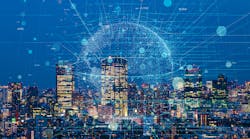Megatrends are driven by technological and demographic changes. They are immutable. What megatrends can we identify within the basic value propositions of the modern electric utility? Identifying and understanding these megatrends offers insight into the industry and strategies for the future.
In 2012, we presented five of these immutable megatrends in the booming electric transmission and distribution industry in a popular white paper, “Identifying Megatrends Shaping the T&D Industry.” We were right in our insights. Grid modernization, storage, maximizing the use of transmission rights-of-way, distributed energy resources, and operational efficiency are hallmarks of the next generation (NxG) electric utility. The future will be built on the fundamental values of our industry: safety, reliability, affordability, sustainability and compliance. In this context, what are the next megatrends?
Safety
Robotics and artificial intelligence (AI) will reduce or eliminate the need to put personnel in hazardous situations. Robots, including unmanned aerial systems, will safely and efficiently retrieve data from substations and overhead and underground transmission and distribution lines. It will be analyzed with new algorithms that identify changes, trends and anomalies at rates heretofore unthinkable.
Through an iterative process, AI uses human machine learning applications to “learn” to make decisions, order materials and generate work orders. Watch for the first applications in post-storm rebuilds.
Reliability
Strategic undergrounding of poorly performing overhead distribution circuits will sweep through North America. The total life cycle cost of overhead 15-kV and 35-kV class distribution has been underestimated for years, and the cost of undergrounding is coming down.
Perhaps we can better quantify the economic loss to the community and the utility, multiplying citywide domestic production in dollars by the minutes of outages for overhead versus the minutes of outages for underground.
Still unquantifiable, but increasingly sensitive, are the aesthetics of aggressively trimmed trees (some by law) along a formerly tree-lined street.
Affordability
Augmented and virtual reality (AR/VR) will serve to reduce time, fleet and travel expenses for a wide variety of field visits. Augmented reality will give on-site personnel real-time access to equipment specifications or drawings, or to subject matter experts in any part or the world. Virtual reality will use 3D models of substations and facilities to facilitate remote job walks, equipment checks and in-office instruction.
In a time when competitive advantage over a neighboring utility, gas, or distributed energy resources (DERs) is increasingly important, AR/VR technology will help to hold down costs for operations and maintenance.
Sustainability
Mobile (electric vehicles, or EVs) and stationary storage will dramatically change the way legacy electric generation and the grid operate. Once designed for the summer or winter peak, a grid with utility-scale and customer-owned storage is a new paradigm. Advancements in material science will lead to smaller batteries with higher capacity and longer life, as well as better efficiencies for solar panels and films. Clean solar power can be stored for use after dark. Fewer fossil plants will be needed, but the new gas plants that are built will be highly efficient. Better choices and lower prices will help EVs start to displace the internal combustion engine.
Compliance
Cybersecurity is at the center of regulatory compliance. Basic protection of commercial interests and customer information will require continuous improvement, but protection of the grid and critical infrastructure will remain at the forefront of discussion. One method to reduce the cyberthreat risk is to build in resilience with microgrids. Microgrids serve load during high-impact, low-probability events like cyberintrusions. Microgrids and DERs are not short-term solutions, but in the long run they address the challenges well. As we said in 2012, megatrends are driven by demographics and technology, and they are immutable. Megatrends will define the future of our industry. Are you preparing for this future?


